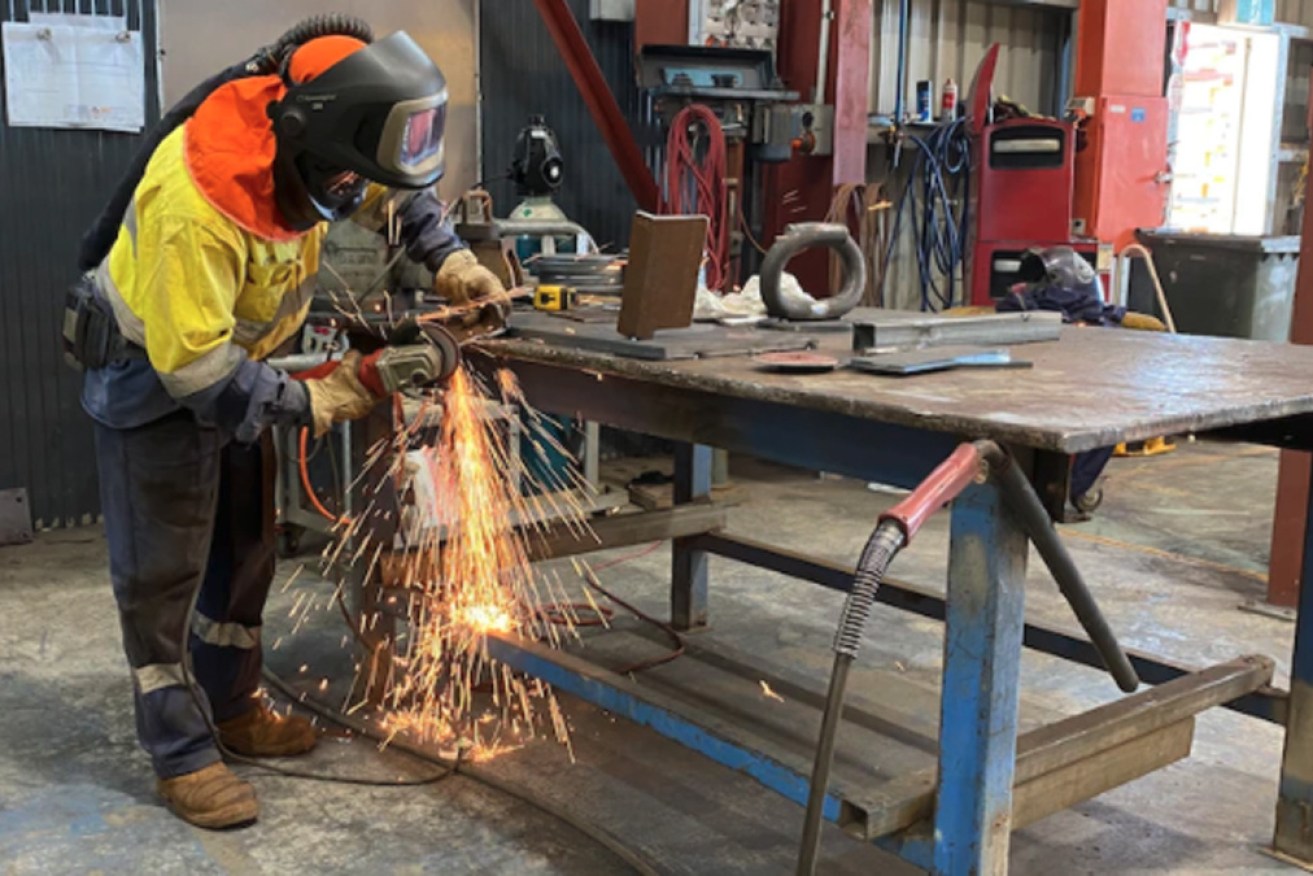Help wanted: Job ads hit record levels as labour market shrugs off Omicron


Strategies are needed to boost output and plug workforce gaps, a jobs and skills report says. Photo: Getty
Bosses across Australia are rushing to hire blue- and white-collar workers as new data shows the jobs market has weathered the Omicron storm.
Job advertisements have hit record levels as employers from the legal to construction industries bring on new hires, with the latest ABS figures revealing unemployment held at a 13-year low in January.
Economists said the data showed a “remarkable” resilience as the virus surged last month, with unemployment holding steady despite COVID testing crises and shortages in essential industries like supermarkets.
The jobless rate is now forecast to continue falling and could even hit record lows in 2022, Indeed APAC economist Callam Pickering said.
“The economy is proving to be quite resilient to Omicron,” he said.
“The job creation we’re seeing right now translates to strong growth – unemployment could plausibly be below 4 per cent by mid-year.”
CommSec senior economist Ryan Felsman said the strong jobs result will help push the Reserve Bank towards an interest rate rise in 2022.
“The ‘great job boom’ continues!”
Jobs market weathers Omicron
The unemployment rate held at 4.2 per cent in January, the ABS said on Thursday, as an estimated 12,900 more Australians found work than lost their jobs.
But all the jobs growth was in part-time jobs, which increased by 30,000.
Full-time jobs actually fell by 17,000, the ABS said.
Meanwhile, SEEK said its job ads hit record levels in January as bosses in most industries put up ‘help wanted’ signs to find new workers.
Hiring activity was widespread, ranging from construction and trade jobs to white-collar roles like insurance services and accounting, SEEK said.
Economists said strong jobs growth suggests unemployment will fall to record lows in 2022, particularly after the January data showed Australians found work even during the peak of the Omicron wave.
“[Today’s data] should provide confidence that the economy will bounce back in the coming months,” EY chief economist Jo Masters said.
Australia’s Omicron wave was the worst globally on a per-capita basis, but its effect on the labour market was mostly limited to a large drop in hours worked across the economy.
The number of workers in New South Wales and Victoria who took sick leave was more than three times higher than normal, the ABS revealed.
“Western Australia was the only jurisdiction with a usual low number of people working reduced hours in January because they were sick,” ABS head of labour statistics Bjorn Davis said in a statement on Thursday.
Hours worked fell by 159 million between December and January, down 8.8 per cent.
Mr Pickering said this fall will show up in lower March-quarter GDP data because fewer people were working to increase economic activity.
“It provides a pretty big downside risk for GDP growth,” he said.
But the participation rate, which measures the number of people in the jobs market, did not fall like it did during the Delta lockdowns and actually rose slightly.
BIS Oxford senior economist Sean Langcake said that shows workers maintained their connection to employers, despite taking more sick leave.
“This puts the labour market on a strong footing moving forward,” he said.
“Strong labour demand will continue to push the unemployment rate lower through 2022.”
Unemployment to hit record lows
Ms Masters agreed the labour market is set to tighten further in 2022, but said the focus of economists is now shifting to wages data next week.
December-quarter wages growth data will be published on February 28.
It will be closely watched by the Reserve Bank, which is trying to decide whether interest rates need to rise now that the economy is rebounding.
Mr Pickering said RBA governor Philip Lowe will be encouraged by the January jobs data because it shows wage pressures should be building.
“Everyone is having trouble finding staff right now and at some point that should trigger higher wages growth,” he said.
But there is uncertainty over how far the unemployment rate must fall to spur annual wages growth higher than 3 per cent – the RBA’s target.
The theory here is that when there are fewer unemployed workers it is harder for bosses to fill vacancies, forcing them to lift wages to attract staff.
The issue is that no one knows what level of unemployment will result in higher wages growth – although Dr Lowe expects bosses will only lift pay packets gradually.
Economist Saul Eslake believes unemployment could reach 3.5 per cent by the end of 2023, a level that should lead to higher wages.
That would be the lowest unemployment rate Australia has ever seen.
“I have little doubt wages growth will pick up – what I don’t really know is how quickly it will pick up,” Mr Eslake said.
Treasury boss Steven Kennedy told Senate estimates on Wednesday that wages could start rising much more quickly after unemployment hits a certain threshold, suggesting the relationship is not linear.
“A great power comes from a very low unemployment rate,” he said.
“It’s well worth testing how long we can keep it at that level to see if it’s consistent with stable inflation and quite strongly growing wages.”
ANZ economists predicted on Thursday that wages growth will hit 3.5 per cent by the end of 2022 in annual terms and 4 per cent in 2023.
But they said real wages will fall further, as inflation is expected to weigh on household budgets.








